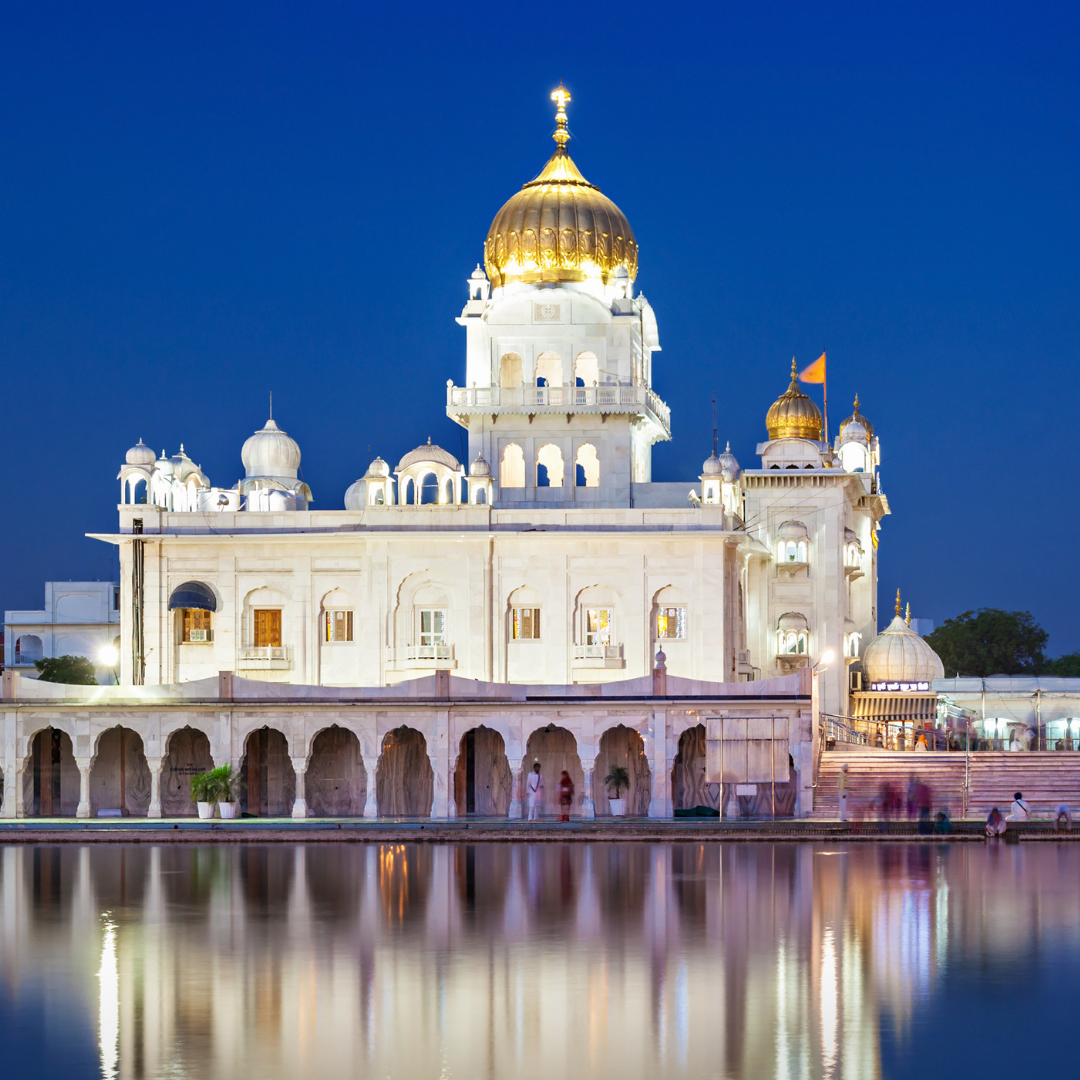Gurdwara Bangla Sahib is one of the ten historic gurdwaras of Delhi which commemorates the visit by one of the Sikh Gurus. This Gurdwara is situated near Connaught Place in New Delhi and the building was once known as the Jaisinghpura Palace owned by Raja Jai Singh of Amber. Guru Har Rai was displeased with his elder son Ram Rai because he had deliberately given a wrong interpretation of one hymn in the Guru Granth Sahab in order to appease Emperor Aurangzeb. He was not considered to be worthy of Guruship and so Gurujee bestowed the Guruship to the younger son, Guru HarKishan. He succeeded to the Gurugaddi in 1661, at the age of six. Baba Ram Rai who was a favourite at the court of Aurangzeb challenged his father’s decision of bestowing gurugaddi on the younger brother and complained to the Emperor. The fact is that Guru Harkishan already embodied the light of the Gurus and even when he was barely five years old, he had been tried and tested as a perfect fearless and fully illuminated soul. In 1664 Emperor Aurangzeb summoned the Bala Guru (the child Guru) to Delhi. Initially, the Guru refused to respond to the summons but agreed at the intervention of Raja Jai Singh of Amber. Raja Jai Singh and his son Raja Ram Singh who commanded great respect and honour in the court of Emperor Aurangzeb invited Guruji to their spacious bungalow, which is today known as Gurdwara Bangla Sahib. The Raja obtained the Emperor’s assurance that till the Emperor was satisfied with the succession issue, Guru HarKishan would stay at the Raja’s bungalow as his guest. The Raja also convinced the Emperor to allow the Sikhs themselves to choose their spiritual leader. Guru HarKishan.was the clear choice of the Sikhs. During his stay in Delhi, the Guru served the poor and the sick in the city. The Guru distributed medicines, food and clothes to the needy. Gurujee directed Diwan Dargah Mal to use the daily offerings made to the Guru by disciples to help the needy and soon stories about his healing powers spread widely. All this won the Guru many admirers including among the Muslims of Delhi who was impressed by the purity of his outlook and began to refer to him fondly as ‘Bala Pir’ or the Child prophet. In 1664 there was an outbreak of smallpox in Delhi. The child Gurujee stayed near the water reservoir on the premises. People believed that anyone who drank the water from this now sanctified reservoir was cured of the disease. Many came to take water from this spring. Young Guru Har Krishan moved among the poor and the needy providing succour. Unfortunately, Guru jee himself contracted smallpox. He knew his end was near and he asked his followers to move him to the banks of the Yamuna River, the site of the Gurdwara Bala Sahib. He died on March 30, 1664. Later on the marvellous bungalow was to become an important Sikh shrine and is now known as Gurdwara Bangla Sahib. Raja Jai Singh had a small structure constructed over the well to store the water. Since this water is reputed to have healing properties, even today, devotees take this water as a healing “Amrit” to cure all their ailments. In 1973 a beautiful Sarovar or tank was built adjacent to the Gurdwara. Throughout the day, the strains of melodious Kirtan can be heard. There is a large langar hall with an adjoining kitchen. As in all Sikh Gurdwaras, langar or the free kitchen is open to all people, irrespective of religion, or race. Volunteers and designated sewadars, or gurudwara staff, prepare the langar, the free kitchen – normally a meal of dal and rotis which can be partaken by any visitor to the Gurudwara. Women specially offer their service in the making of rotis. The only stipulation for any visitor to the Gurudwara complex is to cover their head with a scarf as a mark of respect and to remove their shoes. Also as tobacco is a substance banned in Sikhism, no one may smoke or use tobacco on the premises. Many volunteers offer their sewa or service in the Joda Ghar where people may deposit their shoes at a secure counter. In fact, the enthusiasm to offer service is almost competitive as people enthusiastically line up to reverently place the shoes of the devotees on numbered slots. Some even clean the shoes with a cloth. The Gurdwara complex has the Amrit ghar, and the Baba Baghel Singh Museum located in the basement is also very popular with visitors. It displays many paintings which depict historical events connected with Sikh history. The Delhi Sikh Gurudwara Management Committee runs a charitable patients’ department in the basement of the Gurudwara building which has been running here for over several decades. Some of the best medical specialists in the city donate their time for free and can be accessed by anyone.




